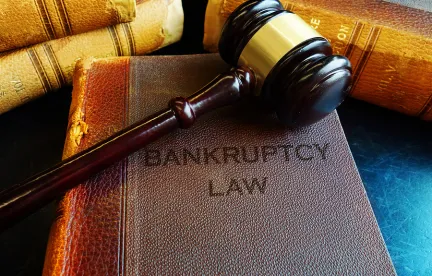Selling the assets of a business through a bankruptcy case is a proven method for realizing maximum value for those assets. Traditionally, such sales have been completed either through a plan of reorganization or through what is known as a Section 363 Sale, which is conducted outside the ordinary course of business. While both methods have their advantages and disadvantages, Section 363 Sales provide a faster mechanism for realizing and maximizing value. From start to finish, sales outside of the ordinary course of business can be completed in as few as 30 days. Examples of recent Section 363 Sales involving well-known companies include SK Hand Tool Corporation, Chrysler Group and General Motors.
Through a sale process outside of the ordinary course of business, a debtor can sell assets quickly and on a going-concern basis before those assets lose value during the pendency of a protracted bankruptcy case. Additionally, the sale order can (and should) provide that the assets are to be sold free and clear of all interests, liens, claims and encumbrances—a significant advantage for both buyer and seller.
The Anatomy of a Section 363 Sale
Although the purpose of a Section 363 Sale is to maximize value as quickly as possible, certain basic procedures are required to ensure that all relevant parties have notice of the sale and an opportunity to object, and that maximum value is achieved through the sale process.
As part of this effort to maximize value, the Bankruptcy Court will ensure that the debtor's assets are properly marketed for a sufficient amount of time—ideally beginning before the bankruptcy case is actually filed. At this stage, an investment banker or sales agent will be employed to market the assets to potential purchasers in hopes of securing what is known as a "stalking horse bid," which serves as a baseline for all other bids. Once the bankruptcy case is filed, the debtor will file a motion to set bid, auction and sale procedures. The sale procedures establish the process that the debtor will follow in the bankruptcy case to sell the assets in question. Typically, the procedures will build in an additional period of time to market the assets. They will also set forth a specific timeline during which competing bids must be received. If any competing bids are received, the sale procedures will provide for an auction to take place involving the parties that have submitted those bids and the stalking horse bidder. Lastly, they will set a final hearing to—hopefully—have the sale or auction confirmed (or approved) by the Bankruptcy Court.
This sale process can maximize value in a number of ways. For starters, a stalking horse bidder demonstrates to other potential buyers that there is value in the assets to be sold and that they are worth investigating. Second, a stalking horse bidder rarely puts its best and final offer on the table in the first instance. The bidding and auction process also brings other interested parties to the table and, hopefully, creates an environment where the highest value for the assets will be achieved.
Recently, Much Shelist conducted a successful auction in the SK Hand Tool bankruptcy case. The debtor received an initial stalking horse bid of approximately $3.2 million. Subsequent competing bids were received and an auction was held. Ultimately, the assets were sold for $8.3 million—an increase of more than $5 million or approximately 250%. Clearly, the competitive nature of the auction process contributed to the successful outcome for the debtor.
A more technical reason that a sale outside the ordinary course of business often garners the highest value for the debtor's assets is because a Bankruptcy Court is authorized to sell the assets free and clear of any interest in such property. While these obligations are not extinguished, they are paid through the Bankruptcy Court from the proceeds of the sale process. Therefore, the buyer is not required to deal with or resolve any of them—increasing the value of the assets to the buyer.
Although a Section 363 Sale may not make sense in every bankruptcy scenario, it can be an effective strategy for a financially distressed entity. Please contact an attorney for guidance in determining whether a bankruptcy and Section 363 Sale are the best way to maximize the value of your assets.



 />i
/>i

